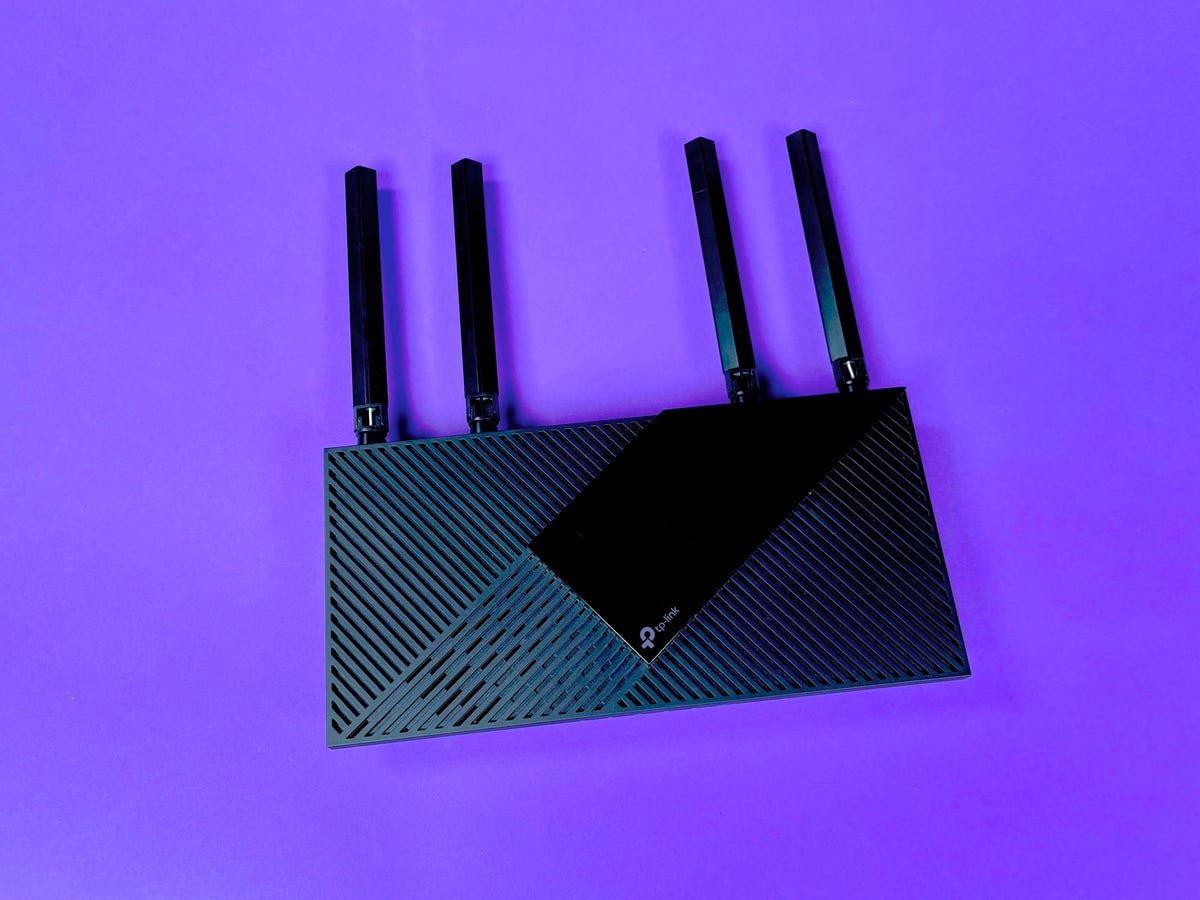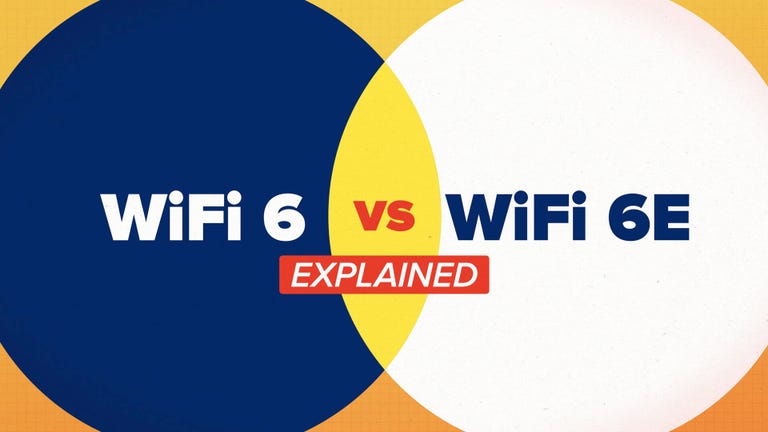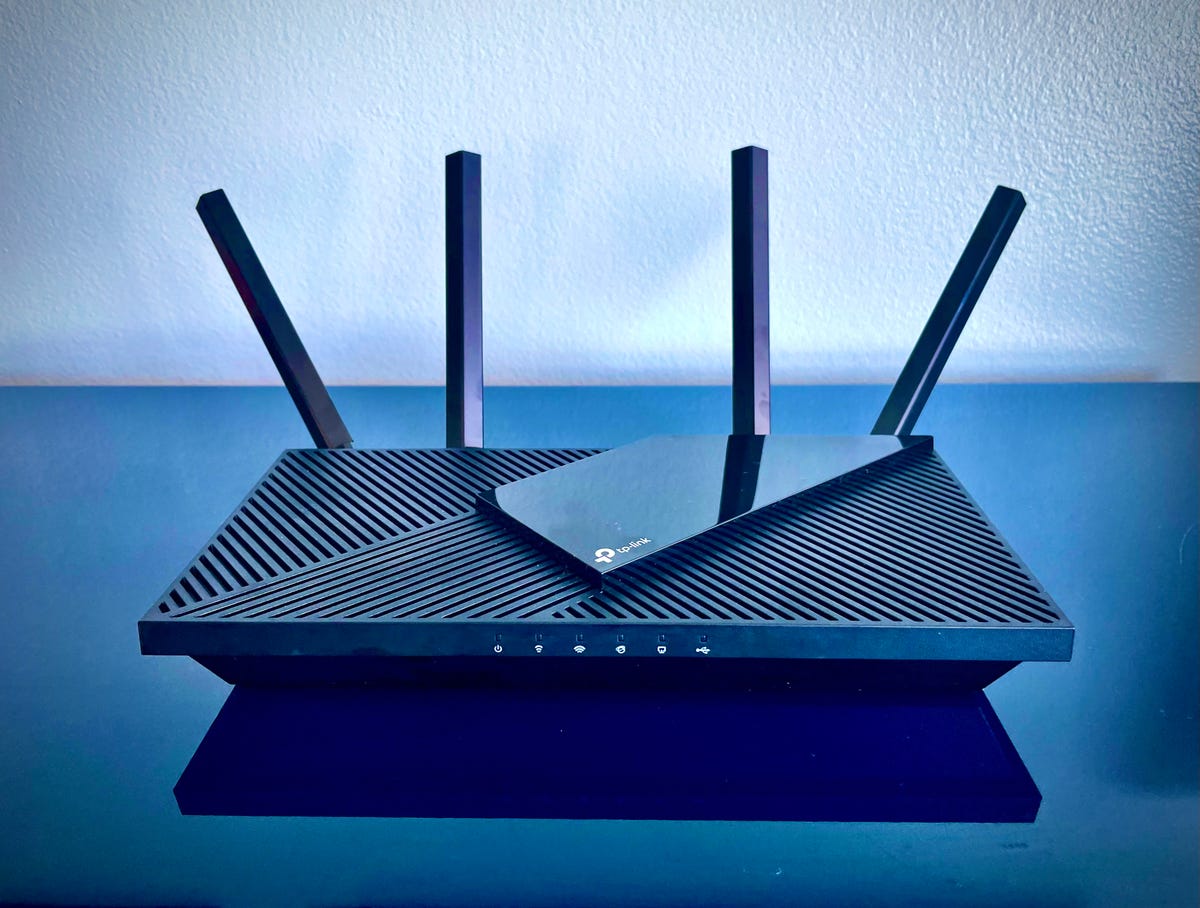8.2
TP-Link Archer AX21 AX1800 Wi-Fi 6 router
Like
Faster performance and better range than comparable AX1800 routers
Thoughtful, well-designed app for simple setup guidance and easy access to settings
Nice-looking build with multiple spare LAN ports
Excellent value
Don’t like
Lacks unique or advanced features
Not powerful enough to max out a gigabit internet connection
WAN port caps incoming wired speeds at 1Gbps
Product details
-
Wi-Fi Standard
Wi-Fi 6
-
Speed Rating
AX1800
-
Range
Up to 2,500 sq. ft.
-
Wireless Networking Security
WPA3
-
Bands
Dual-Band (2.4 and 5GHz)
Best suited for small- to medium-sized homes and apartments with internet speeds up to 500Mbps, the TP-Link Archer AX21 stands out for its impeccable stability, faster-than-average speeds and Wi-Fi 6 compatibility. It also has better range than many mesh systems we’ve tested, which use several devices to spread the Wi-Fi signal around bigger homes.
That said, it won’t keep up with a decent mesh router if you’re trying to blanket a large space or a multistory home. Nor is it your best choice if you’re trying to connect at as high a speed as possible over a gigabit network. Instead, the TP-Link Archer AX21 is for home users who need a router that’s simple to set up and affordable while offering strong and speedy performance. If that’s what you need, the TP-Link Archer AX21 sits at the top of our list and few others compare.


Watch this: Wi-Fi 6 vs. Wi-FI 6E: Here’s the difference in three minutes
Wi-Fi 6 for everyone
Wi-Fi 6 has been commonplace for a while now, but here’s a refresher for those unfamiliar with the latest Wi-Fi lingo. Before the arrival of Wi-Fi 7, Wi-Fi 6 was the the newest version of the wireless transmission protocol we commonly call Wi-Fi.
Wi-Fi 6 devices can send data back and forth at top speeds that are about 30% faster than what Wi-Fi 5 is capable of, with better, more efficient performance, particularly in dense environments where lots of devices need to connect. Almost all devices released in the past few years support the standard, but you’ll need a Wi-Fi 6 router in order to take advantage of those faster speeds at home.
That was a pricey proposition when Wi-Fi 6 first became available a year or two ago, but at this point, most of the major manufacturers offer entry-level Wi-Fi 6 routers for $100 or less. I purchased three of those entry-level options for myself and tested them out — among them, the TP-Link Archer AX21 performed the best, and it even held its own against fancier models that cost more.
A basic design done right
On to the router itself, and let’s start with some basic specs. The Archer AX21 is an AX1800 router — the “AX” part means it supports Wi-Fi 6, while the “1800” part refers to the approximate combined speeds of its bands.
The AX21 features a USB 2.0 jack and four spare Ethernet ports in the back, with the main WAN port color-coded in blue.
In this case, the AX21 is a dual-band router with a 2.4GHz band claiming top speeds of up to 574Mbps and a 5GHz band with a top transfer rate of 1,201Mbps. The caveat there is that you can only connect to one band at a time, so when TP-Link says that the router offers speeds of up to 1.8Gbps, what it really means is 1.2Gbps (and that’s only in an ideal, lab-controlled environment). Marketing ploys like that annoy me as much as they likely do you, but they’re essentially an industry standard, so don’t hold it against TP-Link for playing along. Just be aware as you shop.
One other note: The AX21 supports Wi-Fi 6, but it isn’t a Wi-Fi 6E router that includes an additional band on the newly opened, ultrawide 6GHz spectrum. Routers like those have been on the market for a few years, but for most of us, I don’t think it’s essential to make the upgrade. Only the latest smartphones and laptops support the standard, making it an expensive and unnecessary upgrade for most. Sticking with plain ol’ Wi-Fi 6 seems like the better play to me, at least for most households.
As for the AX21 itself, it’s a pretty standard-looking router with four adjustable antennas, four spare LAN ports and a USB 2.0 jack for connecting peripherals like local storage or a printer. The patchwork array of heat vents lining the top face make it look a touch fancier than the cheap, glossy plastic suggests. I also appreciated the physical on/off button and the fool-proof ports in the back, with the WAN port you’d use to connect with your modem color-coded in can’t-miss blue.
TP-Link’s Tether app does a great job of walking you through setup.
Tethered to a pretty decent app
Like most TP-Link routers, you’ll control the AX21 via TP-Link’s Tether app on your Android or iOS device. Doing so is a bit simpler (and for networking novices, less intimidating) than logging in via the router’s IP address in a web browser, and it makes for a simple setup. Specifically, after plugging the router in and turning it on, you’ll open the app, connect to the router’s network, and then pick out a network name and password. That’s essentially it.
Once you’re up and running, the app allows you to view network status, manage connected devices, turn on a guest network, or troubleshoot any issues with your connection. Other minor features of note include a night mode that lets you program the router to kill the blinking lights during set hours and perform automatic overnight updates for your firmware, both of which are good to have. The AX21 also supports Alexa commands for pausing your home Wi-Fi, along with Amazon’s Wi-Fi Simple Setup, which makes it faster to add Alexa-compatible smart home devices to your network.
You’ll need to head to TP-Link’s web portal for more advanced features, like controls for managing a DHCP server, NAT forwarding or IPv6, but the app does offer a basic quality-of-service engine, which lets you prioritize traffic to specific devices at specific times. You don’t always get that with an entry-level router like this.
In fairness, just about every router at this point offers an app like Tether to simplify setup and controls– but I like Tether better than most, and certainly better than Netgear’s Nighthawk app, which constantly bugs you with popup ads to purchase Netgear’s security software. That sort of nagging seems less frequent from TP-Link.
Tested against two other budget-priced, AX1800 routers, the TP-Link Archer AX21 (blue) finished with the fastest average download speeds on a 300Mbps fiber network, particularly at range.
What about performance?
As I mentioned earlier, I tested the AX21 against two budget-priced AX1800 routers: the Netgear R6700AX and the Asus RT-AX55. All three can be yours for about $100, or less if you catch a good sale, and all offer decent performance for the price.
Still, it was the AX21 that inched out ahead in my speed tests, as the blue bars in the chart above suggest. Those room-by-room speed averages are the product of hundreds of tests across multiple days at my smallish, 1,300-square-foot home, where I tested each router on a 300Mbps fiber internet connection. The AX21 was able to push that connection to the max in four out of five spots in my house. In the fifth, a back bathroom dead zone that’s on the opposite end of my house from where the router sits, my average download speeds plummeted down to 99Mbps, but that’s still a serviceable connection, and it’s more than twice as fast as what Netgear or Asus was capable of.
The Asus RT-AX55 finished with the lowest latency of the three, but the TP-Link AX21 finished in a very close second.
That’s not to say that the AX21 beat the R6700AX or the RT-AX55 outright. Though TP-Link scored the highest average download speeds, it was Netgear’s router that notched the highest average upload speeds, averaging in at about 195Mbps across my entire home (the AX21 was a close second at 188Mbps, while the Asus RT-AX55 averaged out to 170Mbps).
And then there’s latency, or ping, which is a measure of how long (in milliseconds) it takes for your router to send a signal to a given server and receive a response. Lower latency makes for a snappier connection when you’re on a video call or gaming online, so I make sure to record the ping for each and every speed test I run.
The result is that nifty-looking radar graph. All three routers performed pretty well, but it was the Asus RT-AX55 (yellow) that finished with the lowest average latency, never spiking any higher than 19ms. The AX21 (blue) was, again, a close runner-up, with only a handful of minor spikes above 20ms. The Netgear R6700AX (red) finished third, with an average latency just above 20ms and multiple spikes as high as 26ms. Not bad, but noticeably behind the other two.
The TP-Link AX1800 performed well with both a Wi-Fi 6 and a Wi-Fi 5 device, though the Wi-Fi 6 speeds were obviously a bit faster.
With all three routers, I also made sure to run two completely separate sets of tests, one on a device that supports Wi-Fi 6 (an iPhone 12 Pro) and the other on an older device that uses Wi-Fi 5 (an iPad Air I purchased about five years ago). Wi-Fi 6 is backward-compatible, so older devices like that will still be able to connect to the AX21 just fine — they just won’t be able to take advantage of newer features that make Wi-Fi 6 faster.
In this case, the difference in download speeds was pretty slim. Across my entire home, the Wi-Fi 6 iPhone 12 Pro notched a near-perfect average of 299Mbps, while the Wi-Fi 5 iPad Air averaged in at about 270Mbps. The difference between upload speeds was slightly more pronounced. The Wi-Fi 6 iPhone 12 Pro averaged in at around 190Mbps, while the Wi-Fi 5 iPad Air came in closer to 150Mbps, which is a dip of about 20%. In both cases, the difference will likely be even more noticeable with a faster connection than mine.
Don’t expect gigabit speeds
I’ve since upgraded my home networking setup from the 300Mbps connection described above to a gigabit connection with top download speeds of 940Mbps and top upload speeds of 880Mbps. The AX21 was one of the first models I retested on this new network, along with the routers I initially tested it against, plus a few higher-end routers with support for Wi-Fi 6, including TP-Link’s own Archer AX73 and AX75 and the Linksys Hydra Pro 6.
The Archer AX21 (green) wasn’t powerful enough to hit top download speeds on a gigabit network, but it still outperformed its closest competitors (orange and teal), and even outperformed fancier TP-Link routers that cost more (red and yellow). The only router I tested that beat it outright was the Linksys Hydra Pro 6 (blue), which costs $300.
With average speeds throughout my home of 442Mbps down and 239Mbps up, the Archer AX21 wasn’t able to max out my gigabit speeds, but it still offered fast, consistent performance, and like before, it managed to outperform other AX1800 models like the Netgear R6700AX and the Asus RT-AX55 at just about every turn. Again, the only slight weak spot was with uploads — it was close, but both the R6700AX and the RT-AX55 finished with averages that were slightly higher than the AX21.
Perhaps most interesting was how the AX21 fared in comparison to its big brothers in the Archer family, the AX73 and AX75. The former is a dual-band AX5400 model that supports much faster speeds than the AX21, and the latter is basically the same thing but in a tri-band design, with two separate 5GHz bands. The AX21 managed to keep up with both of them just fine, finishing neck-and-neck with the AX75 and well ahead of the AX73. The AX72, in particular, didn’t perform well in my tests after its poor band steering pushed me to the slower 2.4GHz band in multiple instances where it shouldn’t have. If you’re thinking about the AX21 and tempted to bump up to a fancier Archer model, I’d probably tell you to stick with the AX21 for the superior overall value.

The verdict
Practically every phone or laptop sold in the last few years supports Wi-Fi 6. If you use those devices regularly at home, then upgrading to a Wi-Fi 6 router that can boost connectivity speeds would be a great move. The TP-Link Archer AX21 gets you there for $100 or less, and it offers stronger overall performance than the competition, plus a very good app for keeping an eye on the network. I didn’t notice any major band steering issues with the router’s SmartConnect feature. The router consistently routed devices between the 2.4 and 5GHz bands as needed, and I never encountered any drops or stalls as I ran tests in my house. I even think the design is nicer-looking than average. All of that makes this router an outstanding value and a better budget pick than other budget-priced Wi-Fi 6 routers I’ve tested over the years.





